STUDENTS PROJECTS
PROJECTS 2011
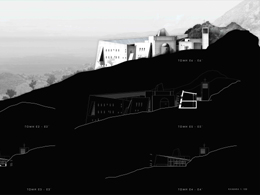
07 April, 2012
New Monastery in Zaltsa, Viotia
Our diploma project, dealing with the designing of a new monastery, is an innovative study.
Students : Nikos Vlavianos, Xrisovalantis Mpasoukas
Supervising professors: Sofia Tsiraki
Consulting professor: Vasilis Tsouras
National Technological University of Athens
Date : 31 March 2011
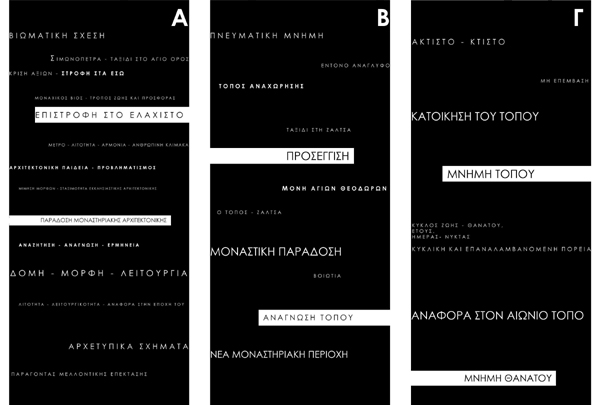
Our diploma project, dealing with the designing of a new monastery, is an innovative study, which readdresses questions concerning the function and the purpose of monastic architecture associated with the monastic life. Earlier on the course of our studies, we designed a small chapel, in which new design approaches were explored, and at the end of our studies we completed a research project on the architectural analysis of Simonos Petra, Mount Athos. Both projects offered us the necessary theoretical footing in order to face this new challenge.
According to Orthodox tradition, the new monasteries are usually erected near old monasteries, or on locations historically associated with an earlier presence of ascetics. They are isolated from the urban reality and in a direct dialogue with the natural environment. For this reason, we chose Zaltsa, a remote area in Viotia, Greece. This location perfectly fulfills the above-mentioned requirements, since the region is known for its famous monks and ascetics, who lived in caves, monastic sketes and monasteries, such as the famous byzantine monastery of Hosios Lucas, a UNESCO monument of the 10th century.
The landscape is impressive and very decisive for the development of the project. In the south, there is a grove of olive trees which goes all the way down to the sea. In the north, the area is defined by a linear rocky hill behind and alongside of which stands Mount Helicon of 1800m. It creates a linear spatial organization of the natural environment, which dictated and reinforced the main designing, an expression of a linear openly developed monastery. It is the opposite concept of the usual enclosed type, as a conscious and symbolic interpretation of how a contemporary monastery should be open to the modern society.
The linear development of the monastery is implemented through the straight and slightly downhill movement from the north borders of the site, to the point where the core of the synthesis was located, namely the central church of the monastery (Catholikon). It is a route that follows adjacent rocks heading to the South, making it an integral part of the synthesis and an element of the architectural space. The monastery turns and opens itself to the rock, giving the monks the symbolic view of the rock that reflects the ascetic rigor of monastic life. On the contrary, on the other lateral sides the monastery's walls take a defensive character with small openings, not only as a historical reference to the necessity of protection and defense against invaders, but also as a conscious expression of spiritual introspection of monastic life that should not be distracted by the beauty of the natural environment.
In the linear development of the monastery, we notice three building sections following a route from the common areas to the private areas of the brotherhood: a) the guest house and an intermediate small courtyard, b) the core of the monastery, which is the central church, the refectory, the abbot's building and the central storage rooms, c) the wings with the cells of the monks, the painting and beekeeping workshops and the infirmary. This provision ensures the hesychastic inner life of the monks but also let the guests integrate with the life of the monastery.
The decline of the constructions to the south creates an open space attitude, since on the north there is the fixed limit of the rock for the most part. The sides of this buildings include galleries in order to achieve a better proportion of indoor and outdoor space. The gallery as an architectural element has its root in ancient Greek architecture. We encounter it on a plethora of monasteries around the world.
A very important point of the complex is the gateway with the tower. The transition from the world of visitors to the core of the monastery is defined by the vertical component of the bell tower, which highlights the entry point to the main monastery. Between the entry and the Catholikon the open space of the monastery's courtyard dominates with the solid vertical walls of the church, which define the space to the south, while to the north there is a small gallery which leads to the low building with the storage rooms containing the monastery's supplies. Next to the storage building, the natural landscape of the rock is manifested, which goes all the way to the central fountain next to the abbot's building. At this point, elements such as the northern edge of the gallery of the church and the solid wall of the refectory, indicate a shift of the visitor to the south in order to meet the entrance of the church in the arcade. At the southern end of the gallery there is a gap between the volume of the Catholikon and the wing of the brotherhood's cells, which is the only point that allows access to the external view.
Similar to the visitors' trail to the church, it was designed the opposite trail, which is the movement of the monks from their cells to the Catholikon. The wing of cells is arranged in the shape of an "L", which provides a small courtyard between the wings and the refectory. The trail of the monks goes through an arcade which is either open or has a light side for protection from the north wind. The courtyard enables the monks to have an open view to the peak of the rock. In the courtyard, beneath the refectory, there is a meeting hall for the assembly of the brotherhood, which is internally linked with the refectory. The connecting point between this section of the complex and the rest of the monastery is the eastern terminus of the "L" which includes a spacious staircase. In this way, the entrance of the monks to the cells is private, without giving access to the visitors, because the function of this part of the monastery is exclusively for the brotherhood. Thus, the visitors and the monks arrive at the church through different routes.
The main church is comprised of four distinct parts, according to the monastic tradition. The first part is the Narthex, which has an open gallery and serves as a reference point of entry. Then comes the "Liti", which has a cubic shape. It is the part of the church where the visitors stand to attend the services. Next to the "Liti" there is the Main Church, or Nave, with a cubic shape and on the eastern edge of the Nave there is the sanctuary. On both sides of the Nave there are assigned places for the choirs, which function as artificial sound enhancers, because of their geometry. On the south of the Liti, there is a small chapel with a baptistry and next to this lays the library of the monastery and the sacristy.
The morphology of the Catholikon's vocabulary refers to a contemporary architectural expression of architectural qualities, which have to do with the formation of the architectural volumes, the relationship of light and shadow and the symbolisms of the Orthodox churches. The light enters through an aperture on the pyramid shape dome and a glass surface around the pyramid. The highlighting of the central area of the Nave is achieved both by the high aperture and lighting that offers the perimeter skylights. These are the only openings which allow the light to come inside and at the same time they have the symbolism of the church's association with the sky.
Regarding the materials of the new monastery, we selected for the load-bearing organism reinforced concrete and a coating of rough plaster. The roofs are covered with sheets of copper, while on the facades appear small parts of the inner wood and metal frames. The floors of the exterior are covered with stones from the region along with parts of raw concrete, while on the interior there are wooden floors and industrial floors on the galleries.
The plaster protects the building from extreme weather conditions of the area despite its low cost. Due to the nearby fault of "Atalanti" and the high earthquake activity of the region, we gave special emphasis to the use of modern materials with high resistance to earthquakes.
Particular care was also given to deposit the rainwater from the roofs and the specially formed wall between the monastery and the rock. All the deposits are connected and maintain the necessary quantities of water for everyday life, including liturgical life and worship.
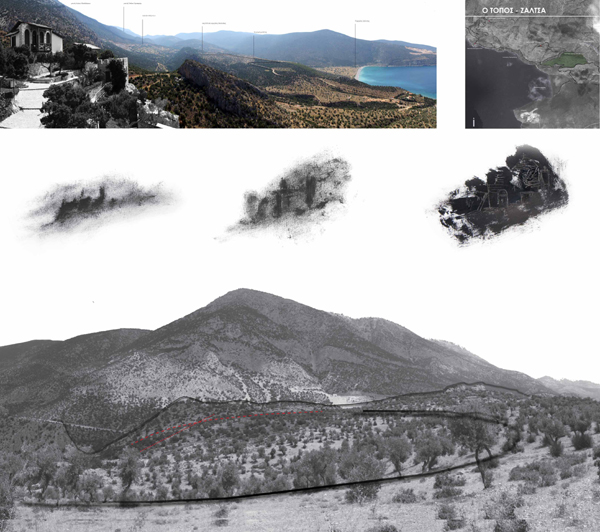
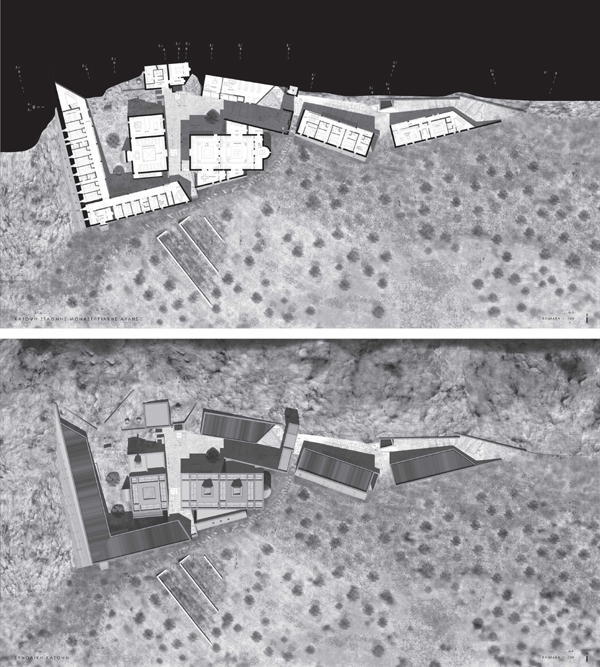
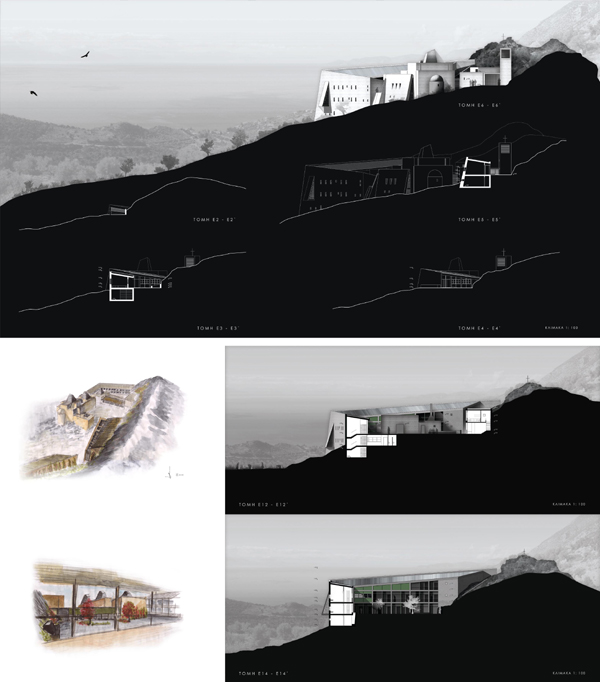
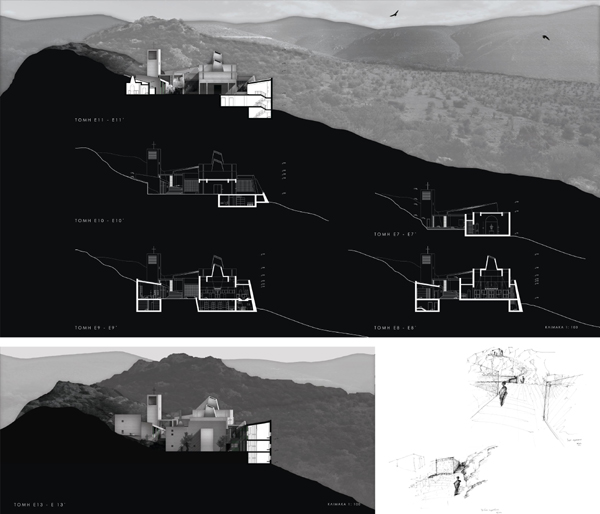
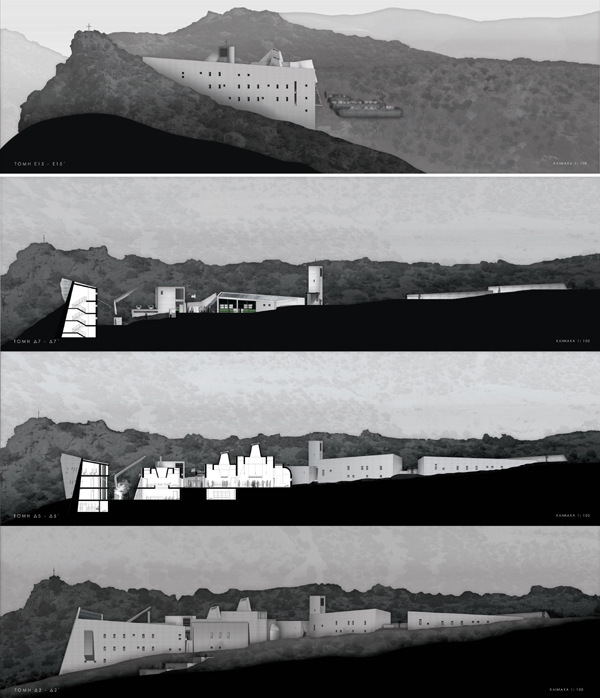
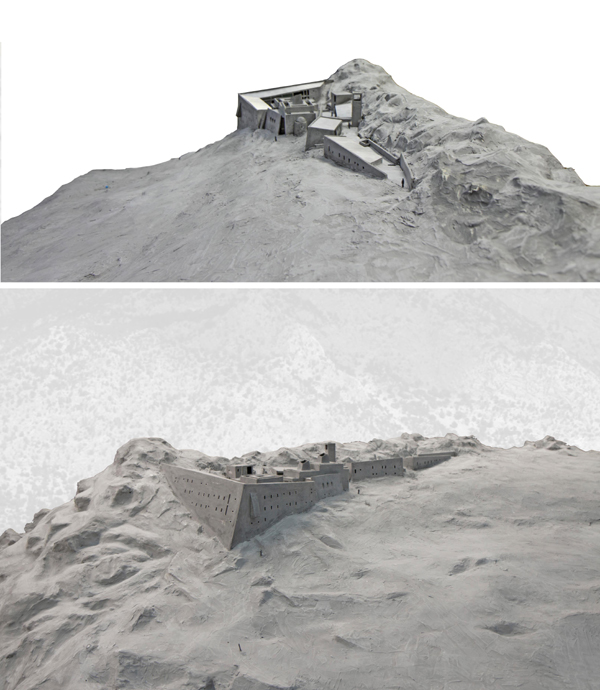
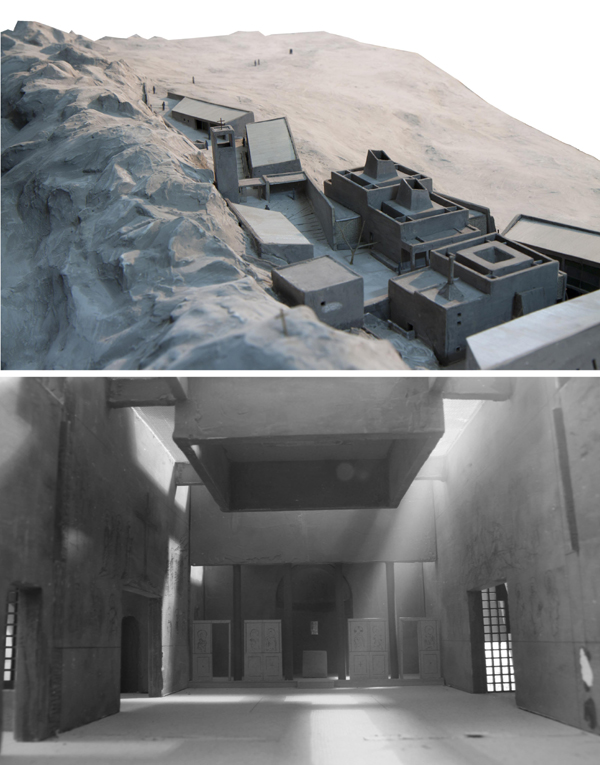
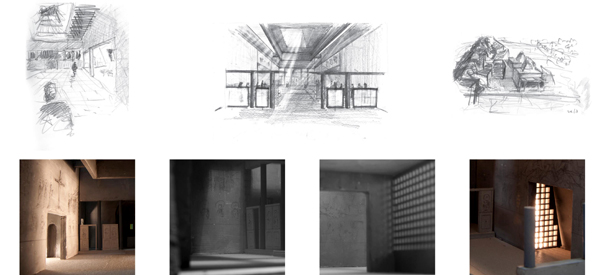
Related articles:
- “Complejo Parroquial de la Ascension del Senor” ( 03 January, 2011 )
- New additions to the collateral buildings of holy trinity monastery in Akrotiri, Chania ( 26 March, 2011 )
- Harajuku church ( 30 June, 2015 )
- Chapel at Murcia ( 25 January, 2012 )
- Travassos Chapel – Loureiro, Peso da Régua ( 09 April, 2012 )
- New Monastery in Zaltsa, Viotia ( 07 April, 2012 )
- The Carmelite Chapel of Montreal ( 30 June, 2013 )










